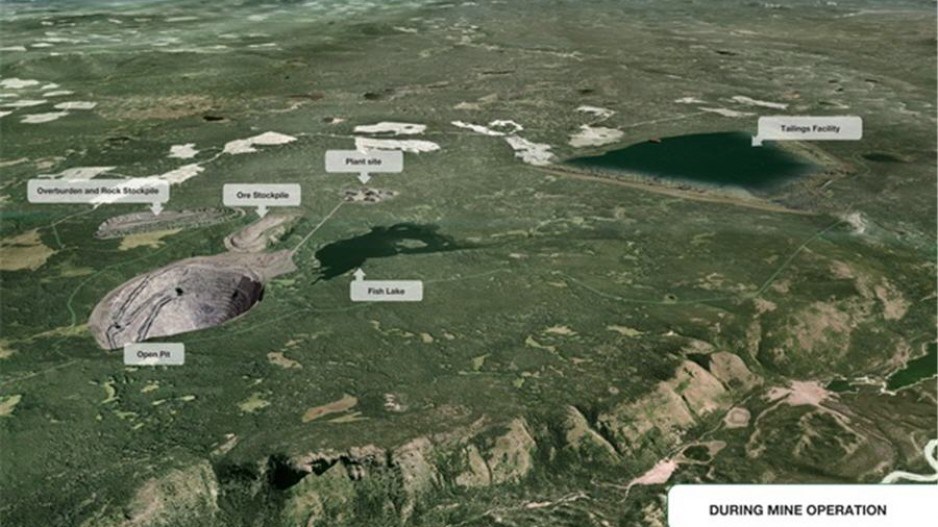A decades long battle against Taseko Mines Ltd. (TSX:TKO) and its $1.5 billion New Prosperity copper mine is over, say the Tsilhqot'in First Nation, which pronounced the project dead, following a Supreme Court of Canada rejection of an appeal by the company.
“This decision has been a long time coming," said Tsilhqot'in Chief Joe Alphonse in a press release this morning."We are celebrating the Supreme Court of Canada’s decision today, and taking the time to reflect on the immense sacrifices made by our communities and members to finally have their voices heard and respected. Now we call on TML to accept that this is the end of the road for them."
Located about 125 kilometres southwest of Williams Lake, the large copper-gold mine proposal was twice rejected by federal Ministry of Environment. But Taseko launched judicial reviews, arguing the decision to deny an environmental certificate was based on flawed engineering and environmental studies.
In a judgement posted today, the Supreme Court of Canada dismissed Taseko's leave to appeal. As usual, it gave no reasons for rejecting the leave to appeal.
The New Prosperity project is said to be the largest undeveloped copper-gold deposit in Canada. The proposed mine has had a tortured history. The Tsilhqot'in have never budged in its opposition to the project, which they say would put fish at risk and encroaches on territory to which they hold aboriginal rights.
For the Tsilhqot'in, the heart of the dispute was Teztan Biny (Fish Lake), which they say is an important cultural and heritage site. It also supports rainbow trout.
The original plan for the mine would have required the lake to be drained for the creation of a tailings pond. The plan was later changed, with the tailings pond to be situated above Fish Lake.
But a special expert panel determined that even that revised plan posed too much of an environmental risk. It also noted that it would have impacts on "traditional uses" by the Tsilhqot'in, and federal regulators again rejected the mine proposal.
The BC Environmental Assessment Office approved the original Prosperity mine project, issuing an environmental certificate, but the federal Ministry of Environment under the Stephen Harper government denied the project a certificate.
This sent Taseko back to the drawing board. It altered it tailings plan, and rebranded the project the New Prosperity mine.
But federal regulators also rejected that plan. Taseko launched a number of judicial reviews and appeals, winning some, losing others.
The fact the B.C. government had issued an environmental certificate meant that the project was kept on legal life support.
The company won a number of legal challenges, based on the provincial approval. For example, the certificate required certain geotechnical work to be done within certain timelines. So while the company pursued appeals of the federal decision, courts acknowledged that the company had the legal right, and indeed obligation, to do the work required by the provincial certificate, despite vigorous opposition by the Tsilhqot'in.
In 2017, the Federal Court of Canada rejected Taseko's application for a judicial review of the federal government's denial of an environmental certificate.
Taseko appealed that decision to the Federal Court of Appeal. In December, the appeal court upheld the Federal Court's denial of a judicial review, and Taseko appealed to the Supreme Court of Canada.
On Thursday, May 14, the Supreme Court of Canada rejected Taseko's leave to appeal.
Asked for a response to today's decision, Brian Battison, vice president of corporate affairs for Taseko, said: "We have no comments to offer at this time."




